How Can I Change a Black Lacquer Dresser
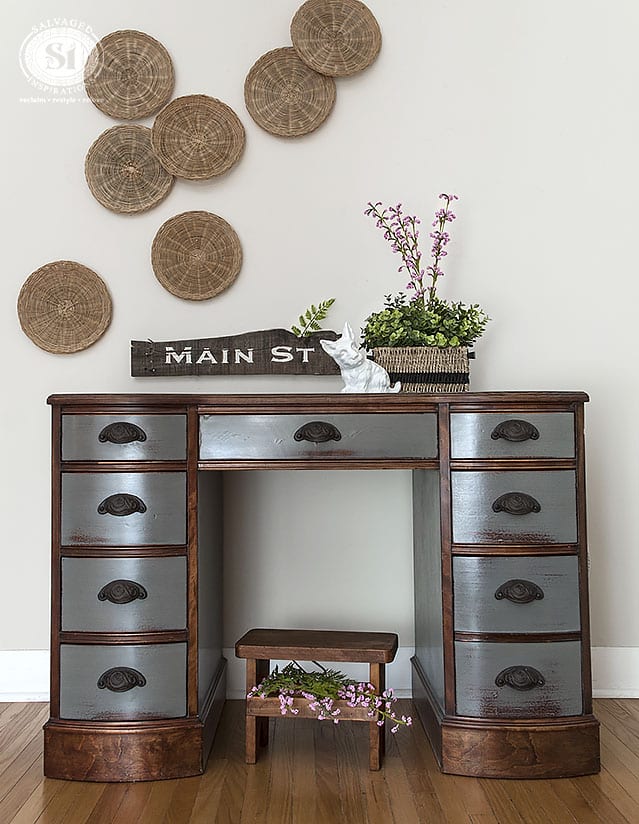
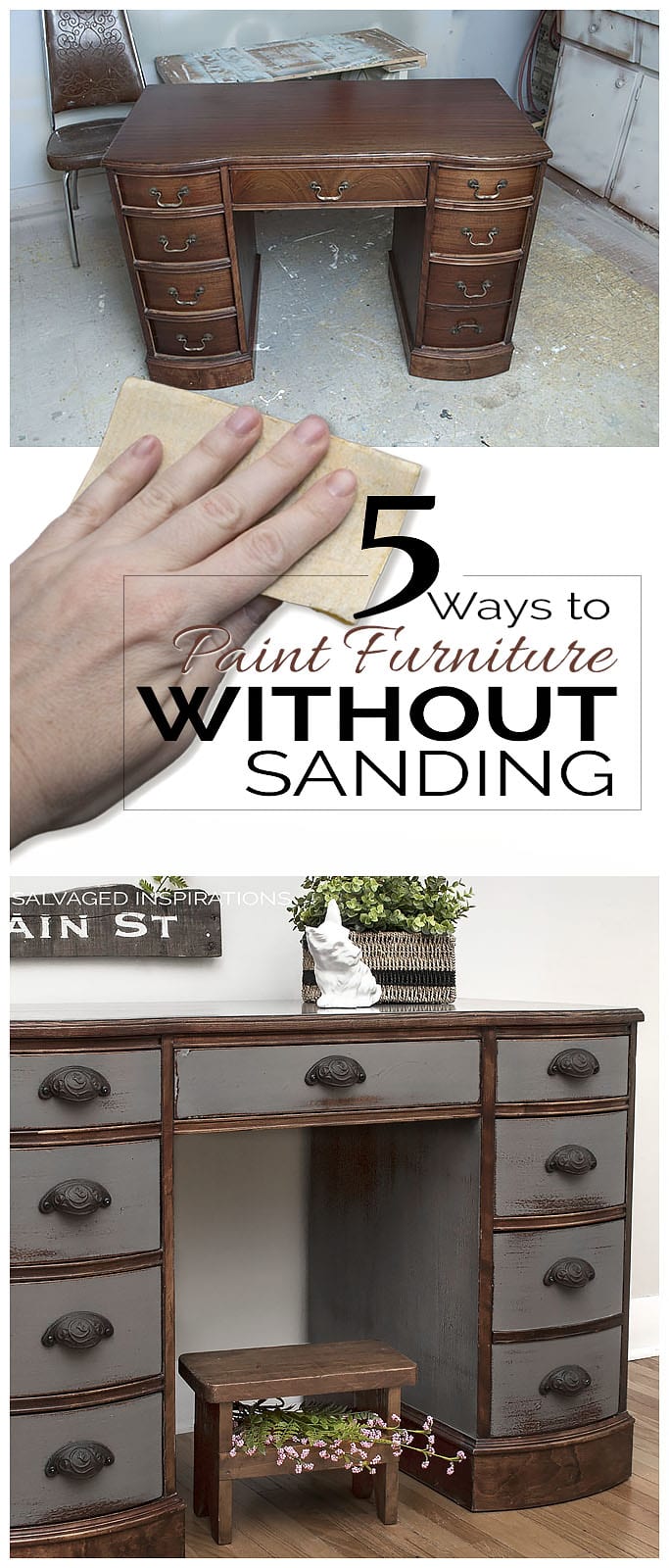 Ask any professional furniture painter what their least favorite part of restyling is, and they will most likely say SANDING . It's messy. It's time consuming. It's mindless work. True fact – when I first started salvaging furniture, I cringed at the merefeel of sandpaper. So, it's not surprising that one of the most FAQ's I receive is: How can I paint furniture without sanding?
Ask any professional furniture painter what their least favorite part of restyling is, and they will most likely say SANDING . It's messy. It's time consuming. It's mindless work. True fact – when I first started salvaging furniture, I cringed at the merefeel of sandpaper. So, it's not surprising that one of the most FAQ's I receive is: How can I paint furniture without sanding?
Before I share a few ways to avoid this messy task {I'll be sharing some products I've tested over the years}, here's a vintage desk I just restyled. This wood desk was NOT sanded prior to painting and it was NOT painted with Chalk Paint.
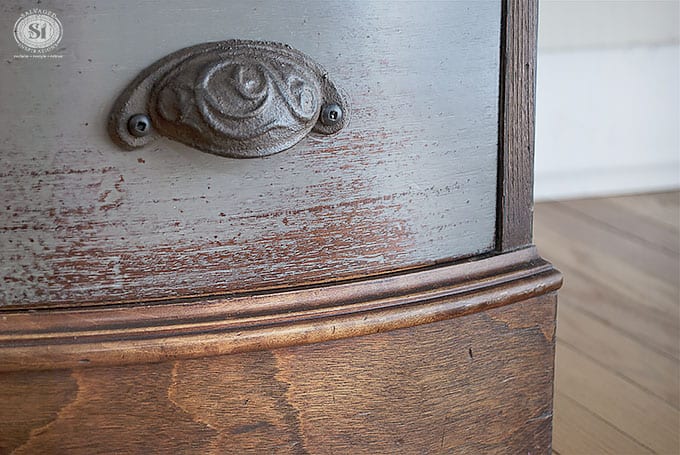 This post contains affiliate links for convenience. You can see my full disclosure here.
This post contains affiliate links for convenience. You can see my full disclosure here.
Here are 5 Ways To Paint Furniture Without Sanding:
1. USE A CHALK PAINT
This is hands-down the most common and well known way to paint pretty much anything without sanding. The huge mass appeal of chalk paint is not only the gorgeous matte finish, but the no prep promise. I'd argue that chalk paints are the cornerstone of the painted furniture industry as we know it today. Since Annie Sloan's Chalk Paints have become so popular, there have been numerous brands of chalky type paints to hit the market.
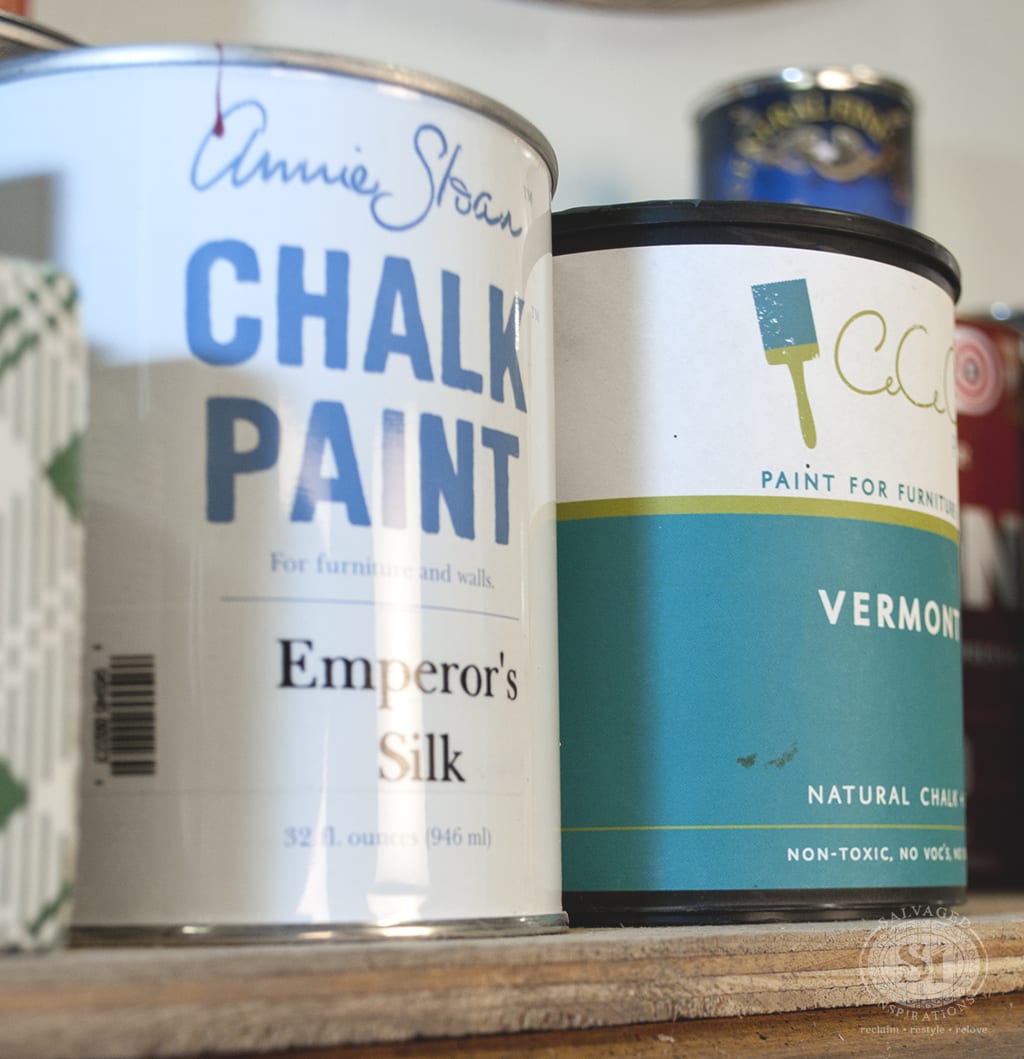 A few brands I've tried and tested {that have amazing adhering power} are:
A few brands I've tried and tested {that have amazing adhering power} are:
Annie Sloan • CeCe Caldwell • Bluestone House • DIY Chalk Paint • General Finishes Chalk Style
2. USE A MINERAL PAINT
Mineral paint is very similar to chalk style paints in that no prep or prime is required. It sticks to pretty much anything. As an added bonus, brands like Fusion are so durable, it's waterproof, stain proof and doesn't even require a topcoat.
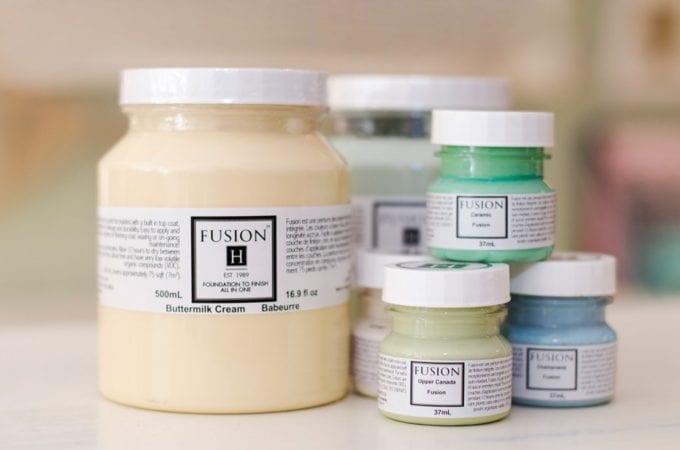 My go-to mineral paints are: • Fusion • Dixie Belle
My go-to mineral paints are: • Fusion • Dixie Belle
3. USE MILK PAINT + BONDING AGENT
As I already mentioned, the antique desk in this post was not prep-sanded. I used Miss Mustard Seed's Milk Paint in 'Trophy' mixed with equal parts bonding agent. Bonding Agent is a milky substance that works like a primer to help adhere the milk paint to your project. It's easy enough to use and the grip is amazing. Mix equal parts bonding agent into your already mixed milk paint. Including the Bonding Agent is only required on the first coat.
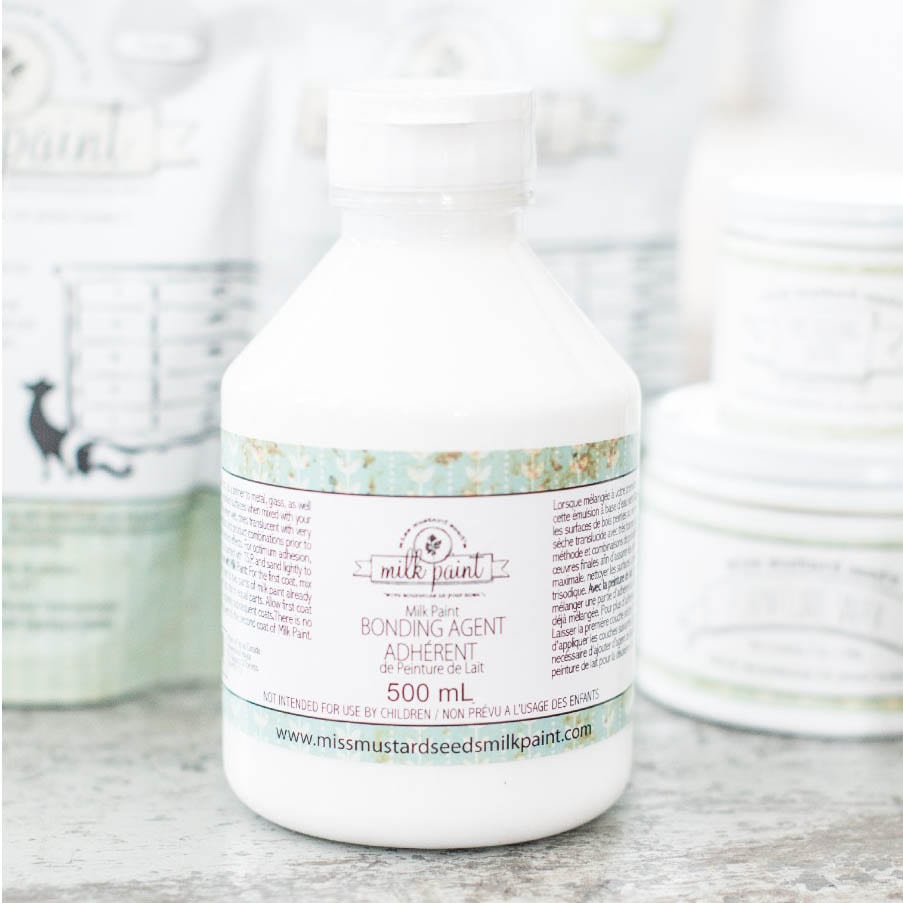
The brands of milk paint I regularly use are:
Miss Mustard Seed • Homestead House • Old Fashion Milk Paint Co.
The Bonding Agent I always use is: Miss Mustard Seed's Bonding Agent
4. USE A BONDING PRIMER
Good quality bonding primers will often state 'no sanding is necessary' and will stick to glossy surfaces like glass, tile, metal etc. Primers like Kilz, Zinnser or B.I.N are known for their excellent binding power. Any of you who are regular readers of my blog already know I'm a huge fan of BIN Shellac Primer. It's my go-to for adhesion, odour and stain blockage including bad bleed though… it does it all! The really good primers do cost a little more but are well worth it. If you use a good quality primer prior to painting with a reputable paint, sanding may not be necessary.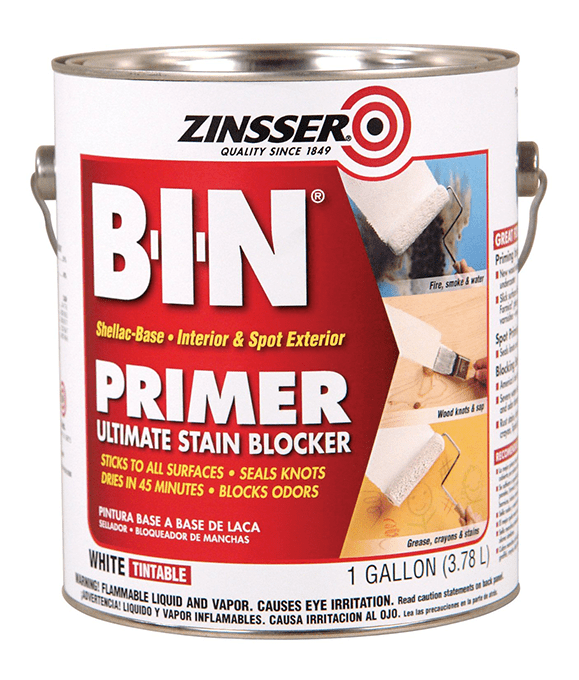 Primer brands I have used:
Primer brands I have used:
B.I.N (my personal fav) • Kilz • Zinnser Bull's Eye 1-2-3
5. USE A LIQUID SANDER/DEGLOSSER
Liquid sand paper/deglosser is probably the least known method to avoid sanding furniture. The liquid is applied to the surface. Then a chemical reaction occurs and grips onto the new paint you apply. It does smell, so it's best used in a well ventilated area. I really like using this product for scroll details on furniture like I did for this vintage piece here. It's easy enough to apply by brushing or wiping it on and then painting within the allotted time indicated in the directions.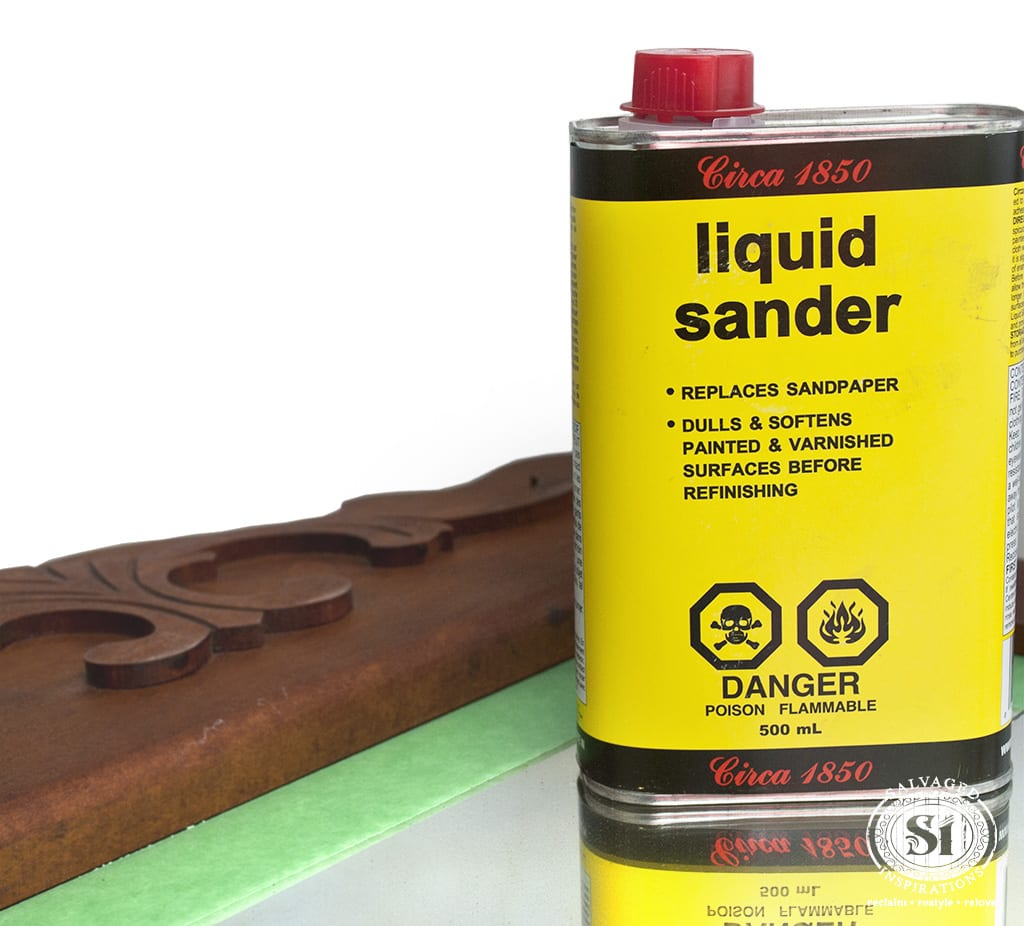
The brand of Liquid Sander I use is: Circa 1850
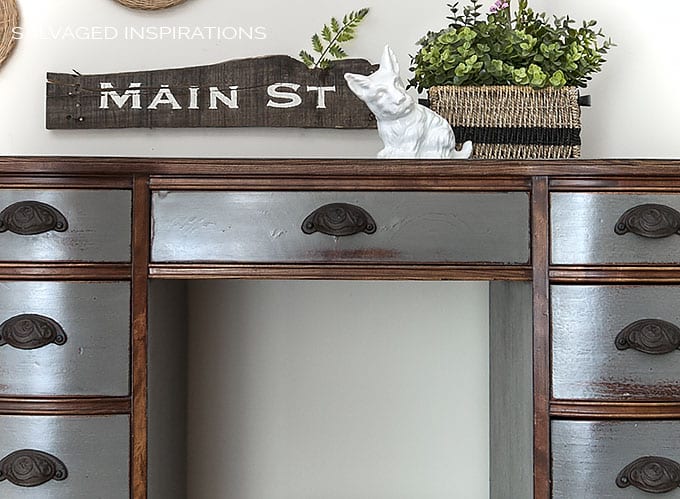
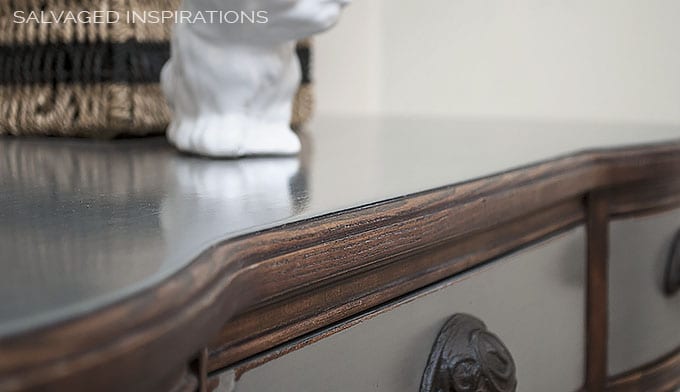
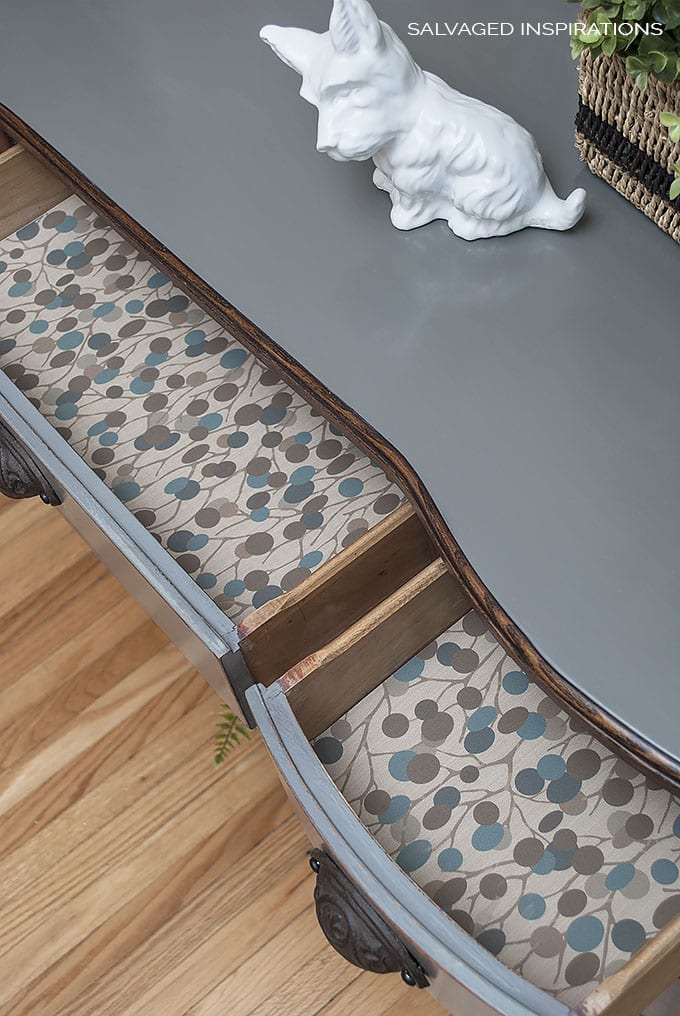
ADHESION TIPS
• Cleaning with TSP or a degreaser will help with the grip of your paint/primer. However, it's wise to read the directions before using heavy cleaning products. Why? A good example is the BIN primer I use states on the label – DO NOT use TSP!
• TEST FIRST! I know you're gung-ho to start, and testing sounds like a waste of time. But I can't tell you how many comments and emails I've received saying "My paint is peeling or chipping". It's well worth taking an extra day to test. Much easier than putting in a few days of creative work only to have to strip it and start all over again. Apply your product of choice in a small inconspicuous area and let it dry. The following day, give it the scratch test with your fingernail or the top of a screw. If the paint sticks, you're good to go.
If your scratch test fails, give your furniture a quick light sanding. It's not a big deal. Take a 150-220 grit sand paper and wipe the surface down as you would your kitchen counter – just enough to scruff it up a little. Then take a tack cloth to remove all the dust. Now you're off to the races knowing all your hard work will last for years to come.
• Really slick/glossy surfaces will benefit from a light sanding.
• Apply your product of choice in light even coats, NOT heavy thick coats. The result will look so much more professional and help with adhesion and dry time.
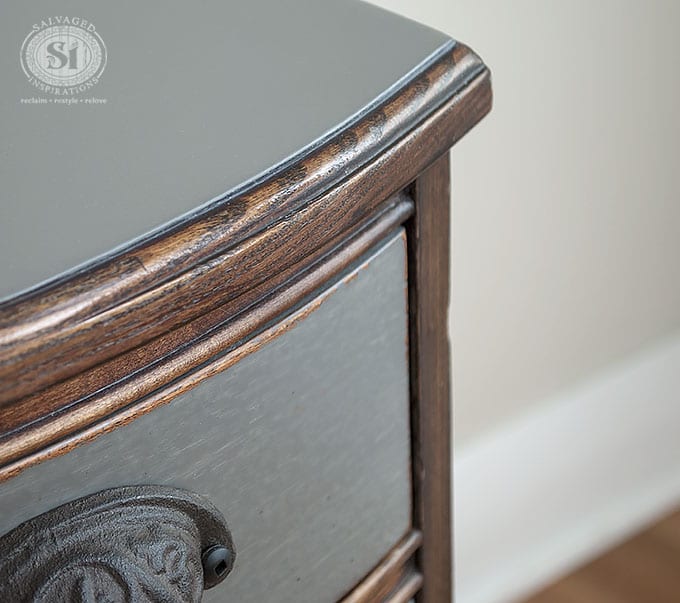
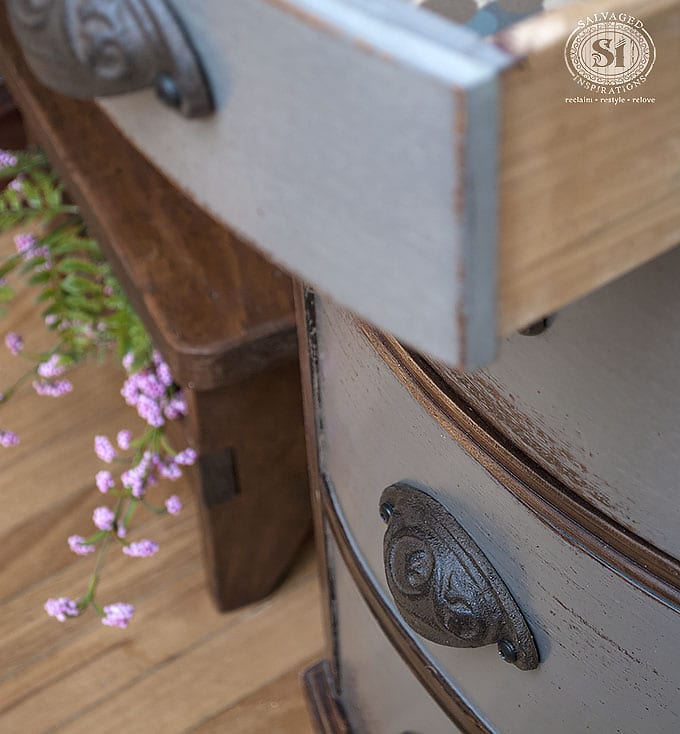
In my experience, the above methods are foolproof 9/10 times, but you still may end up with that one stubborn piece. Furniture kind of does it's own thing. What works beautifully on one piece may not work on another. So when in doubt (or the scratch test fails) please, please, please, give your piece a light sanding! It breaks my heart when I get emails saying "I've put in all that hard work and my paint is peeling off!"
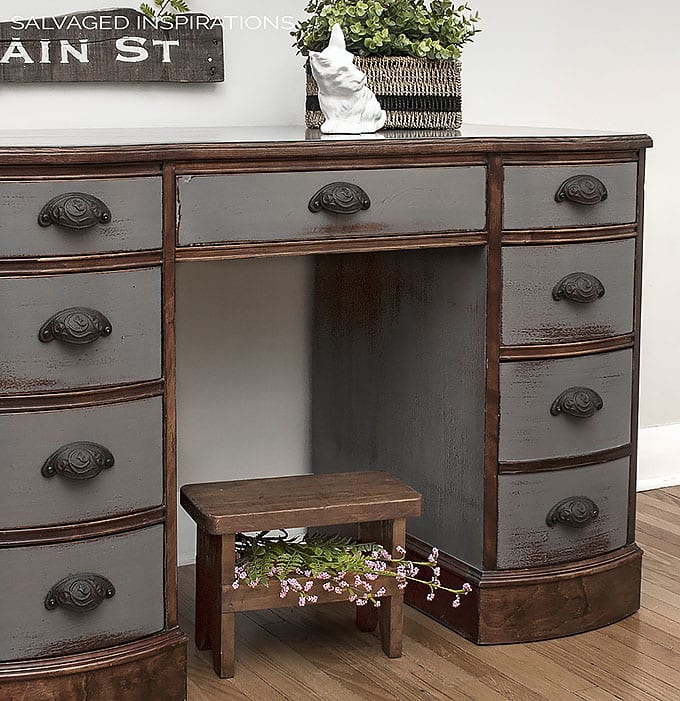 This restyled desk was in good shape so it was a great piece to use for this no-sand post. I chose to leave some of the beautiful wood showing while updating with color. However, in most cases, because my salvaged pieces are often scratched or gouged, the majority of my furniture does need sanding – and true funny fact – I always wear gloves because I still don't like the feel of sandpaper!
This restyled desk was in good shape so it was a great piece to use for this no-sand post. I chose to leave some of the beautiful wood showing while updating with color. However, in most cases, because my salvaged pieces are often scratched or gouged, the majority of my furniture does need sanding – and true funny fact – I always wear gloves because I still don't like the feel of sandpaper!
Feel free to pin this project and if you have any questions, ask away.
To sand or not to sand? Which products and techniques have worked the best for you? Chime in with your thoughts, questions or just to say 'hi' because I always love hearing from you! 🙂
Happy painting!
Denise x
_____________________________
LIKE WHAT YOU SEE? SUBSCRIBE TO SALVAGED INSPIRATIONS SO YOU'LL NEVER MISS A POST!
FOLLOW ALONG ON PINTEREST, GOOGLE+, AND FACEBOOK FOR MORE INSPIRATION!
How Can I Change a Black Lacquer Dresser
Source: https://salvagedinspirations.com/5-ways-to-paint-furniture-without-sanding/
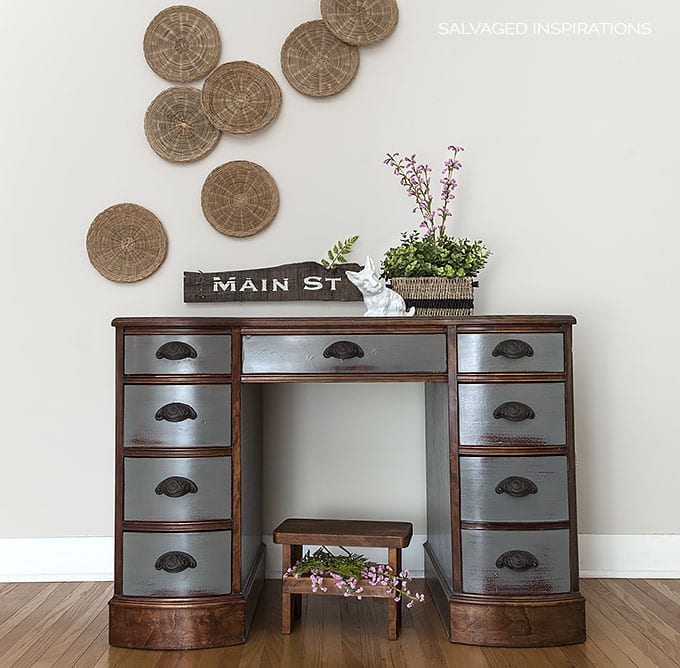



0 Response to "How Can I Change a Black Lacquer Dresser"
Post a Comment